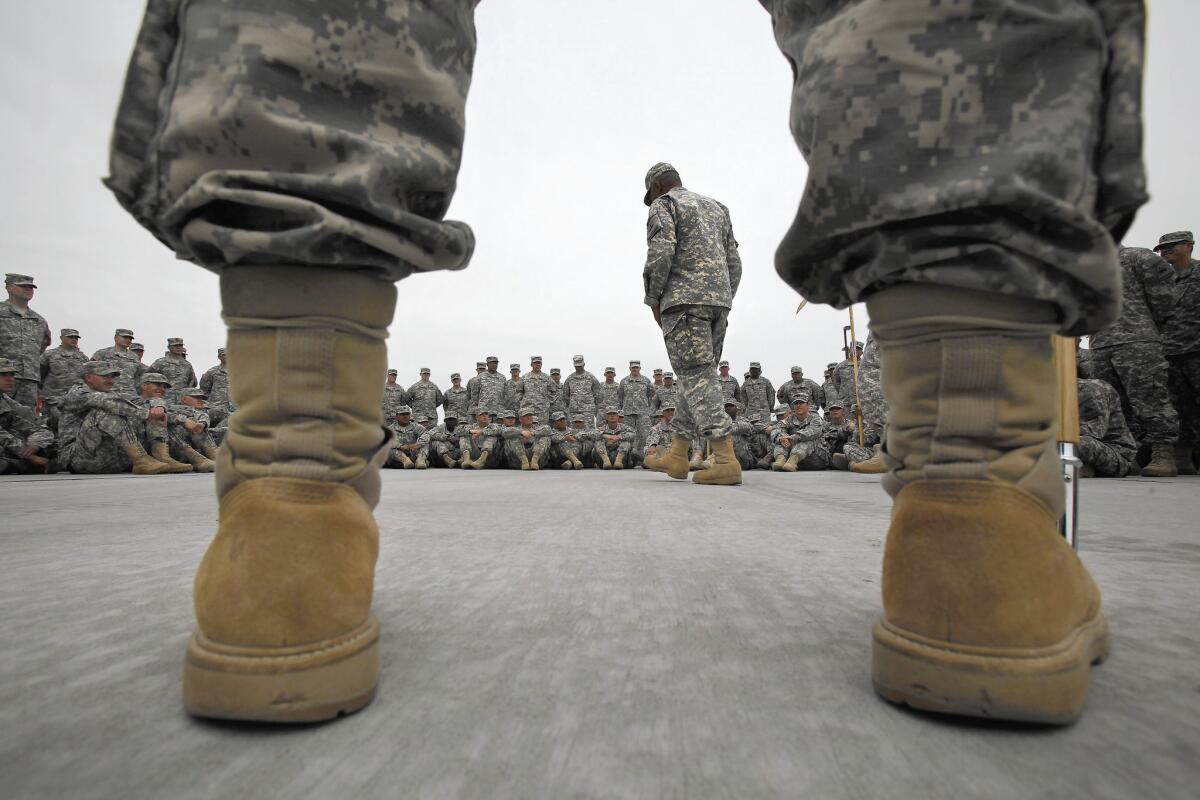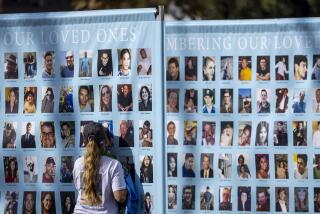Detailed study confirms high suicide rate among recent veterans

- Share via
Recent veterans have committed suicide at a much higher rate than people who never served in the military, according to a new analysis that provides the most thorough accounting so far of the problem.
The rate was slightly higher among veterans who never deployed to Afghanistan or Iraq, suggesting that the causes extend beyond the trauma of war.
“People’s natural instinct is to explain military suicide by the war-is-hell theory of the world,” said Michael Schoenbaum, an epidemiologist and military suicide expert at the National Institute of Mental Health who was not involved in the study. “But it’s more complicated.”
The study brings precision to a question that has never been definitively answered: the actual number of suicides since the start of the recent wars.
Though past research has also found elevated suicide rates, those results were estimates based on smaller samples and less reliable methods to identify veteran deaths. The government has not systematically tracked service members after they leave the military.
The new analysis, which will be published in the February issue of the Annals of Epidemiology, included all 1,282,074 veterans who served in active-duty units between 2001 and 2007 and left the military during that period.
The analysis matched military records with the National Death Index, which collects data on every U.S. death. It tracked the veterans after service until the end of the 2009, finding a total of 1,868 suicides.
That equates to an annual suicide rate of 29.5 per 100,000 veterans, or roughly 50% higher than the rate among other civilians with similar demographic characteristics.
The issue of veteran suicide has become a political cause for activists and legislators. One statistic has become a rallying cry: 22 veterans take their own lives each day.
That figure is a national estimate based on a Department of Veterans Affairs analysis of death records from 21 states. Though it is usually cited in the context of the recent wars, most of those suicides involved older veterans, who account for the vast majority of the nation’s 22 million former service members.
Among veterans in the current study, there was one suicide a day.
The rates were highest during the first three years out of the military.
Veterans who had been enlisted in the rank-and-file committed suicide at nearly twice the rate of former officers. Keeping with patterns in the general population, being white, unmarried and male were also risk factors.
Men accounted for 83% of the veterans in the study and all but 124 of the suicides. They were three times more likely than women to take their own lives.
Female veterans, however, killed themselves at more than twice the rate of other women — a difference much bigger than the gap between male veterans and non-veterans.
A likely explanation is that women with military experience are much more likely than other women to attempt suicide with firearms, dramatically increasing the likelihood of death, said Mark Kaplan, an epidemiologist and suicide expert at UCLA.
Overall, the suicide rates for recent veterans set them apart from veterans of past generations.
In the Vietnam era, suicide rates were elevated for veterans suffering from post-traumatic stress or those wounded in action. But on the whole, suicide rates for veterans in their first few years out of the military were lower than in the general population, according to research.
The elevated rate today could reflect differences in who served, the study’s authors speculate. In the days of the draft, troops represented a wider cross-section of society. The long wars in Afghanistan and Iraq may have attracted more volunteers prone to risk-taking and impulsive behaviors.
“We don’t have the data to know,” said Tim Bullman, a mortality expert and health statistician at the VA and coauthor of the paper.
Another possibility, he said, is that a weak economy during the recent wars made the transition to civilian life more difficult.
More puzzling is the suicide rate for veterans who never went to Afghanistan or Iraq. It was 16% higher than for those who did.
Bullman said one reason could be that service members with psychological problems were often held back from deployment. He added that that suicide prevention efforts had focused on service members and veterans who did go to war.
Experts have also suggested that the military may have become a less forgiving and nurturing place over the course of the wars. “The stresses are not limited to the individuals who are sent to war,” Schoenbaum said.
A more detailed accounting of veteran mortality is on the horizon. A massive new data trove is being assembled by the Pentagon and the VA. Known as the Suicide Data Repository, it links national death records to military and healthcare data.
Among veterans who have served since 1974, the project has identified more than 2 million deaths of all types between 1979 and 2011, according to Robert Bossarte, a VA epidemiologist helping oversee the effort.
For each death, researchers will be able to learn the veteran’s deployment history, education and other information.
Researchers plan to build on the current study — which does not include reservists or veterans who served after 2007 — and look at suicide rates for all 3.7 million veterans who served since 2001.
Twitter @AlanZarembo
More to Read
Sign up for Essential California
The most important California stories and recommendations in your inbox every morning.
You may occasionally receive promotional content from the Los Angeles Times.











